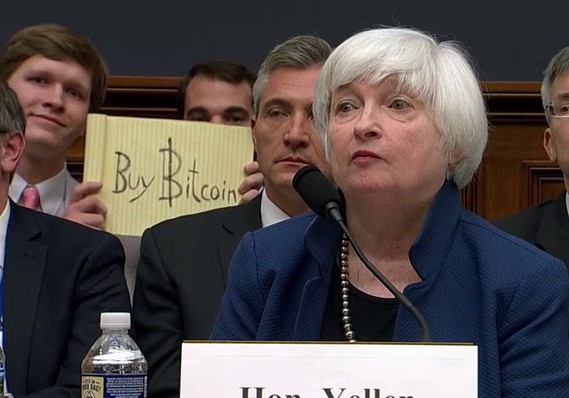As we step into 2018, every crypto investor is left with an almost impossible question to answer: will bitcoin and other cryptocoins go higher in 2018 or are we just about to witness a crypto crash?
If history has anything to tell, it would be: no reason to worry, we asked ourselves the same thing when bitcoin was at $100 or $1,000. But history also serves us the burst of the Internet bubble at the end of the 90’s and the fact that: 1. Apple and Amazon recovered pretty well in spite of a sharp temporary decline in stock price (will the same with Bitcoin?) 2. Some IPO-ed companies that had done pretty well before the bubble burst went bankrupt, leaving investors with only tears and regret (will the same happen with junk coins?). In order to get more clarity on 2018, let’s review the scenarios of cryptocoins going up or down in 2018.
I. Bearish events
1. The end of excessive cash leading to recession… and its impact on cryptocoins
The link between a global economic downturn and a decrease in cryptocoin prices is often made or feared by traditional investors. The rationale is that a new debt crisis or an unmanaged end of quantitative easing (QE) will lead the world to recession, with funds withdrawn from “exotic” investments (like cryptocoins). This would lead to bitcoins being sold to clear off other debts or losses, moving the price of Bitcoin and other altcoins down. This scenario is in my view really pessimistic as it is based on multiple assumptions that are not necessarily true:
Assumption 1: “Central banks will not answer to such a crisis by brand-new quantitative easing initiatives”. We have seen so far that central bankers take QE decisions such as interest rate decisions, seeming to ignore the extraordinary feature such a scheme should have. If you add to that some political pressure from governments, assumption #1 is far from given.
Assumption 2: “Institutional investors already have a large stake in Bitcoin”. It would need a proper investigation with a Bitcoin explorer to prove this one wrong but my understanding is that we are not at a point where major investment banks have such a share in Bitcoin that they can drag down its price in a long period of time. Current whales are parties involved for the success of Bitcoin (Satoshi, miners, Cryptoinvestment funds) that will not act recklessly. This analysis is all the truer for smaller cryptocurrencies that big institutions don’t even bother looking at for now.
Assumption 3: “Institutional investors will exit Cryptocoins in case of stock or bond market crash”. That assumption is not obvious as the share of crypto exposure of major financial institutions is still limited compared to other exposures. Therefore leaving the crypto world overnight will not help them a lot solve their issues. Why bother then, and annihilate any hope to enjoy big crypto-ROI?
Assumption 4: “Long-time crypto investors will not see in the next trough a buying potential”. As a crypto-investor, you should have got educated on the power of blockchain as a store of value, to perform P2P payments, to help bank the unbanked etc. This promise, even if not completely fulfilled today, will remain true even after a strong decrease in cryptocoin prices. There should therefore be buying powers in future crises, allowing to net any short-term fall.
Assumption 5: “The demise of Bitcoin will naturally drag down the other 1400 cryptocurrencies”. I know this one will not please Bitcoin maximalists but Bitcoin has been at the forefront of cryptocoins for years and is now the entry door for every crypto investor. Therefore its price encapsulates a lot of the overall crypto potential value. Would Litecoin or Monero or a brand new coin with its own blockchain suffer as much ? Theoretically, as less as they are actually invested in or speculated on.
All in all, I believe this scenario will not take place, the crypto market cap still being a niche (~$600bn value) compared to the overall size of stock exchanges (~$60,000 bn value). Daily crypto trading volume of ~$30bn is in the order of magnitude of global stock markets, but lagging behind the global FX market (~5,000 bn global daily volume).
Source/More: Cryptocoins outlook 2018 — Part 1: an analysis in the fiat paradigm
















